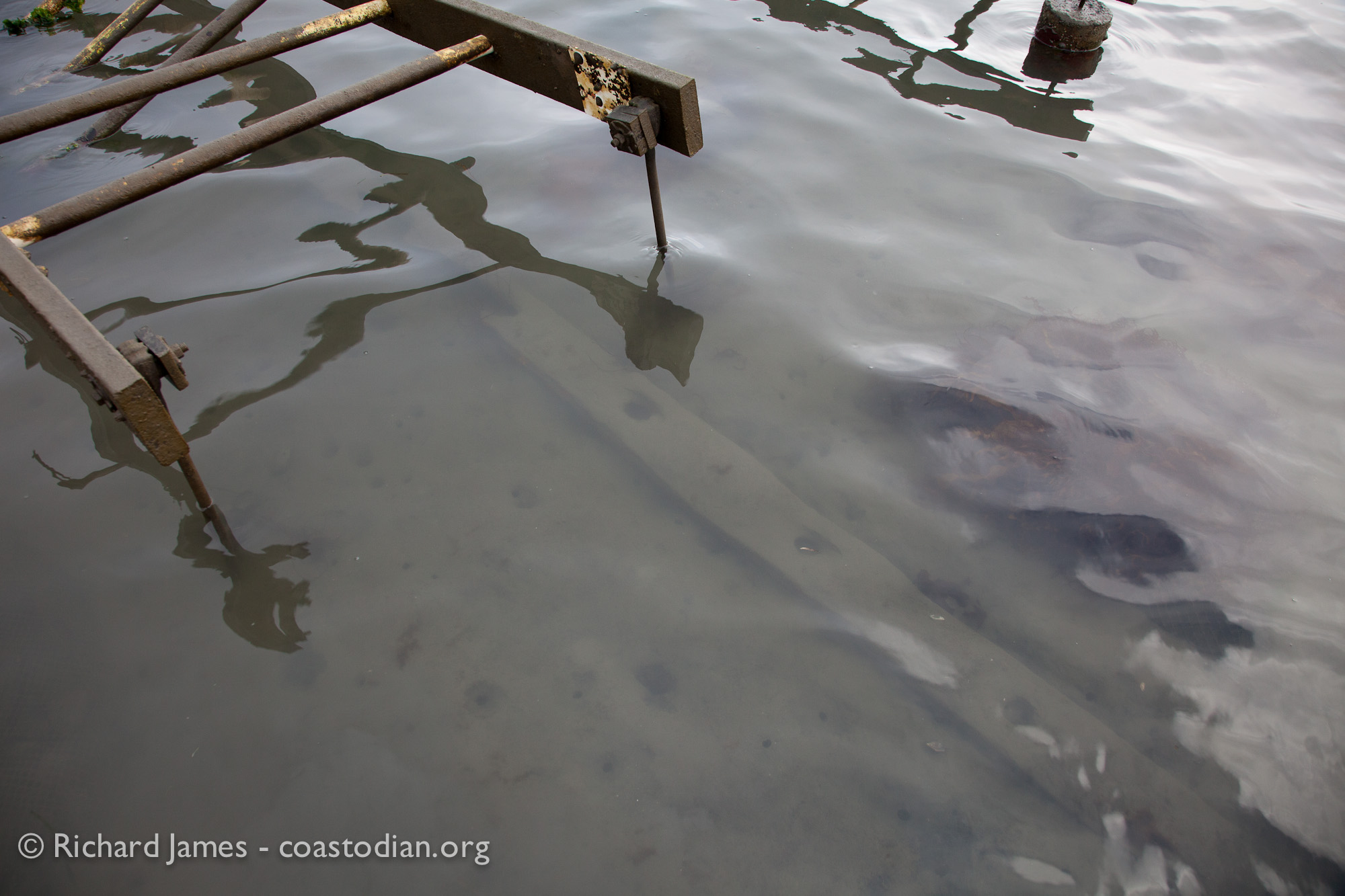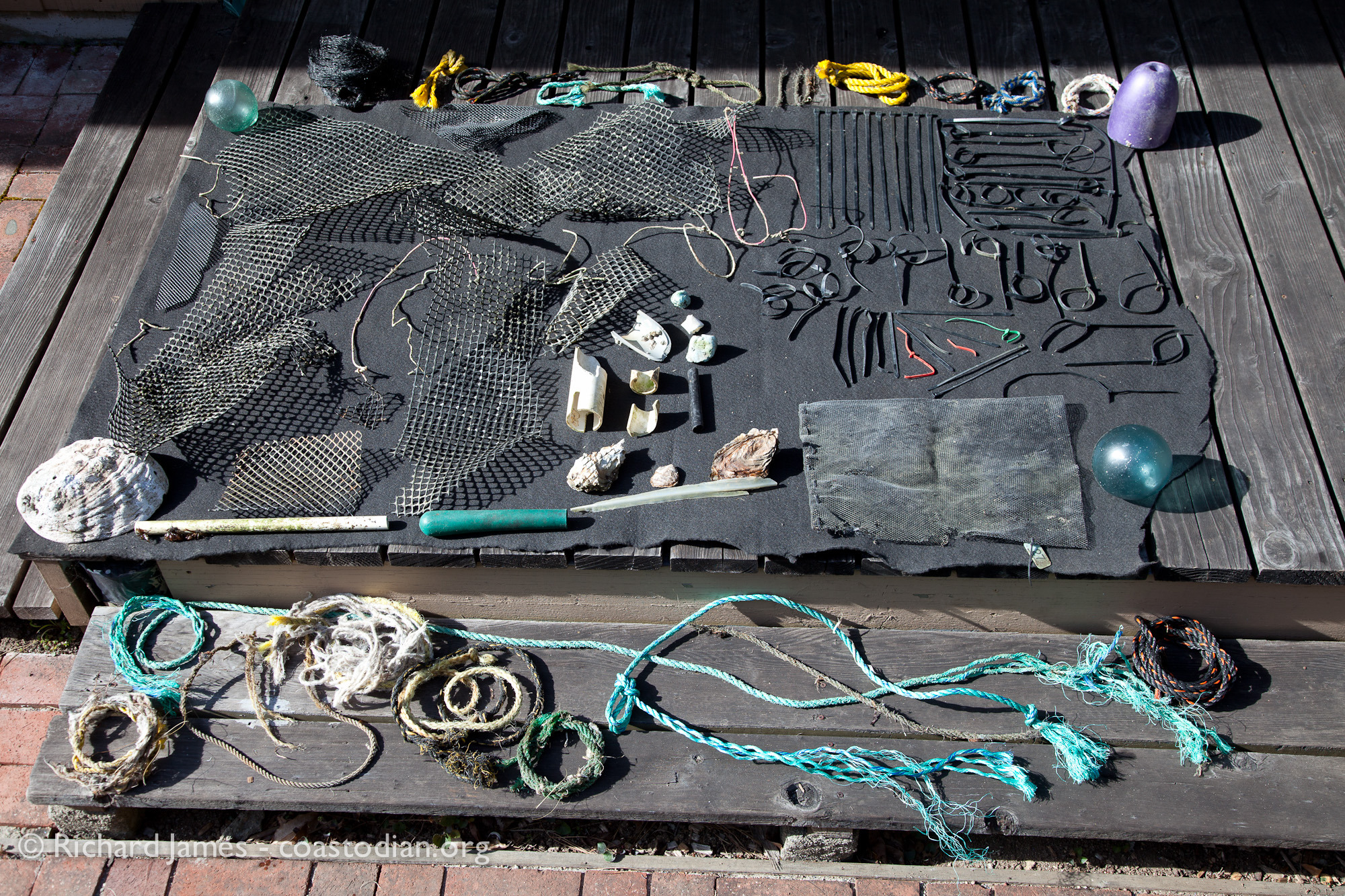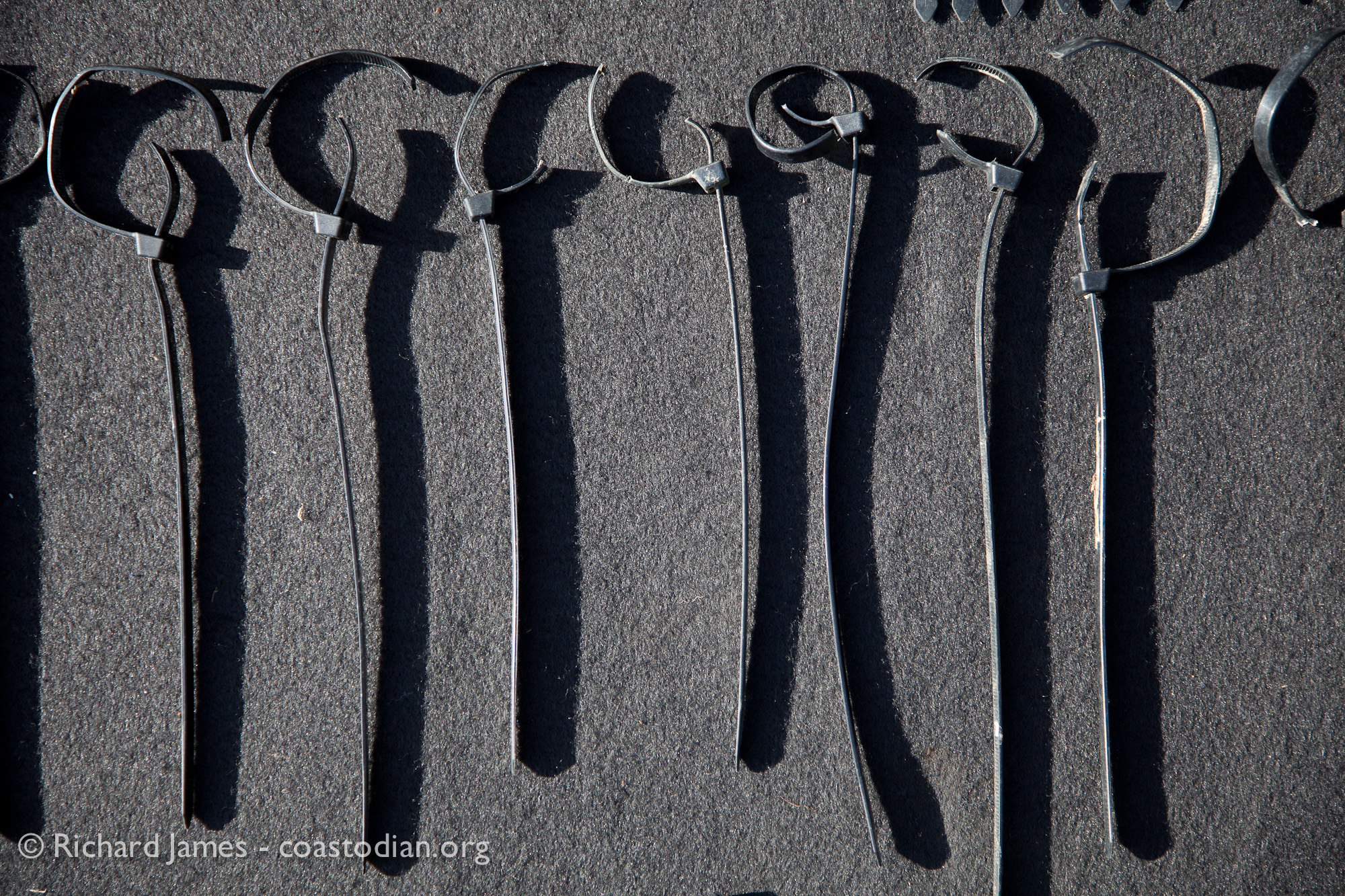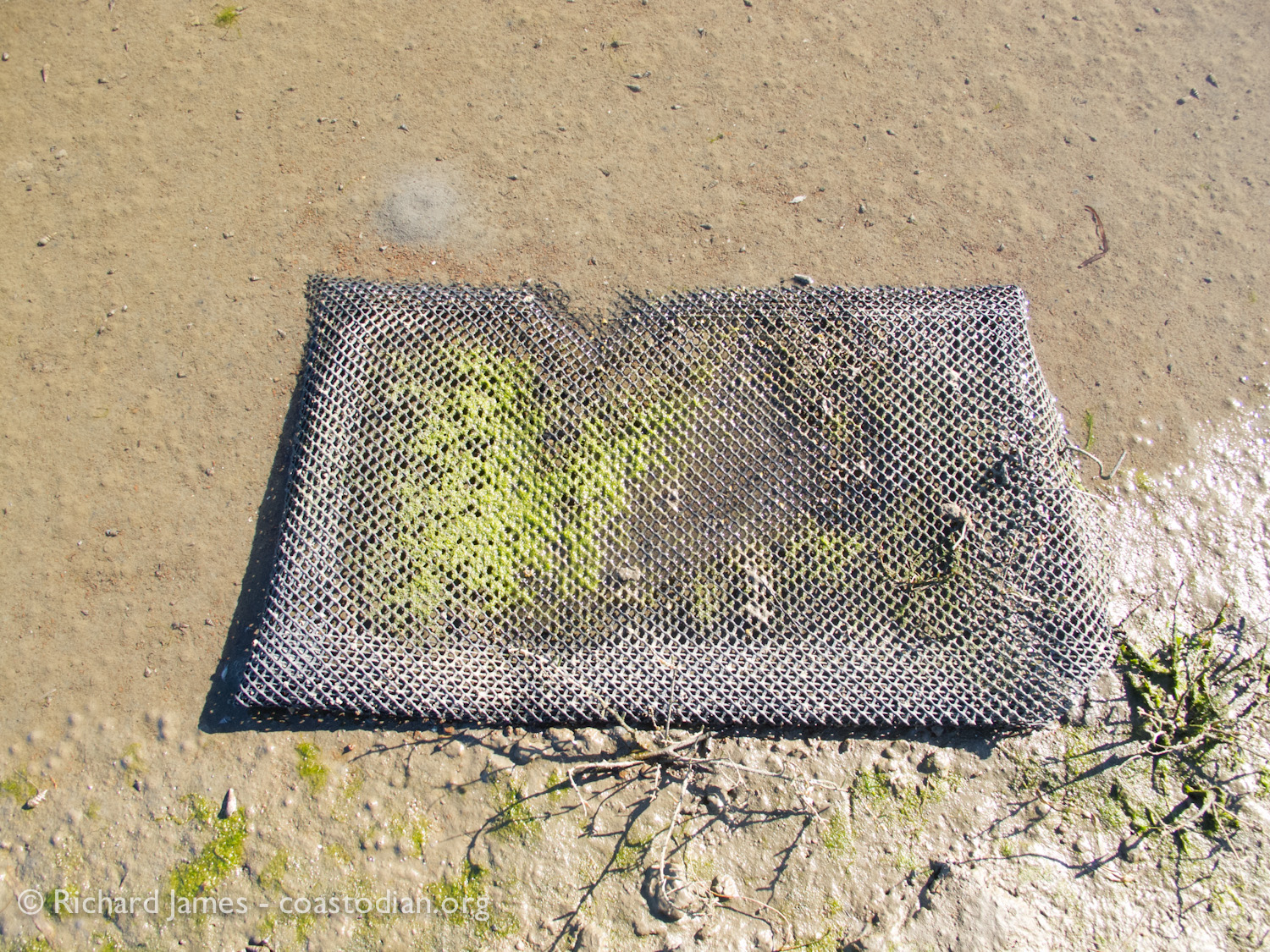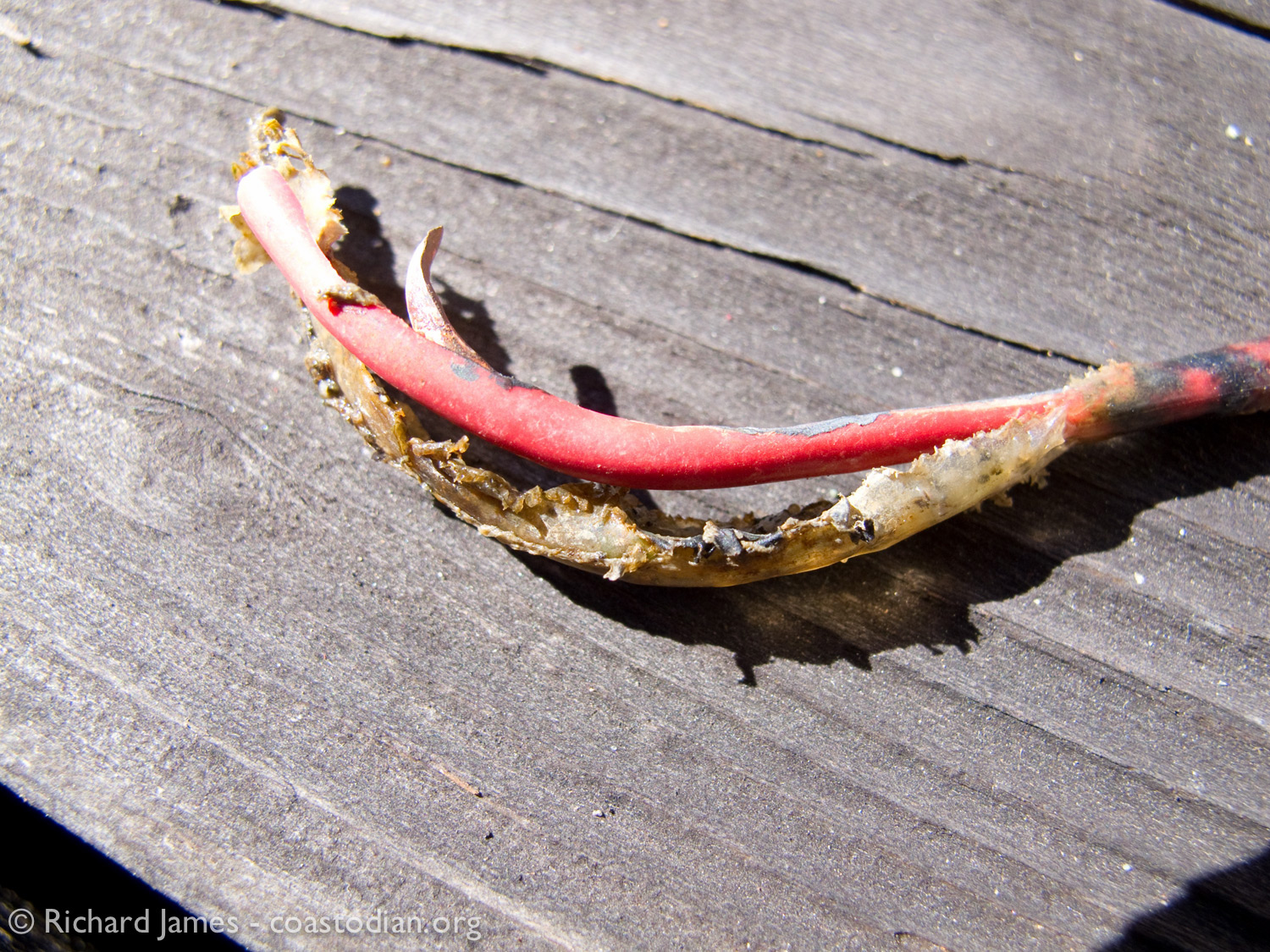Click the words above “Save our Tomales Bay – Part 25 Why?” to see this entire post.
Over the years I’ve packed thousands of pounds of trash off the beaches of Point Reyes National Seashore and Tomales Bay, one question asked of me often is:
“Where does this stuff come from?”
Initially, when I found a plastic water bottle labeled “Made in China”, I thought that it had floated from China to make landfall on Pierce Point for me to find and remove.
Then something happened that changed my mind.
During 2010, the craziest year for trash I have ever seen, I cleaned the 2+ mile portion of Point Reyes Beach between North Beach parking lot and South Beach parking lot.
I cleaned it not once, not twice, but three days in a row.
Each day it looked as bad, if not worse than the day before.
On the third day, I found two identical, pristine water bottles from China. By pristine, I mean they looked as if someone had just come from Palace Market, drank the water, then dropped them on the beach.
Brand new.
Not covered with goose-neck barnacles or bryozoan as would a bottle that had spent months or years bobbing around the Pacific Ocean.
These new bottles I’d found hadn’t drifted over from China on their own.
They had likely been tossed overboard by a crew-member of one of the thousands of container ships that bring countless millions of tons of cheap diversions to the world each year.
After contacting the Port of Oakland, I learned the following about container ships visiting Oakland:
Only 19 hours or less to unload and load all the containers from one enormous ship.
See here for a time lapse video of the loading of 18,000 containers.
Less than 20 crew, most from the Philippines.
For a few months I tried to get my “Thirsty” image of 5 large meta-bottles hung in the room where this crew stays during unloading/loading. The woman with whom I spoke at the Port of Oakland really wanted to do this, but her superiors got in the way and in the end I failed in my attempt to educate the crews of these ships to not toss their trash into the sea.
BUT
I learned something that day.
I never really now where the litter I find comes from, I only know where it ends up.
Which is mostly true.
Mostly, because I know where the 6000+ black plastic spacer tubes I have picked up came from (Drakes Estero – oyster farming operations)
I know where the oyster grow-out bags come from.
.

©Richard James – coastodian.org
Abandoned Hog Island Oysters grow-out bags collected adjacent to lease M-430-15 on 22 March, 2015
.
I know where the thousands upon thousands of plastic zip-ties and lengths of plastic coated copper wire and plastic floats pecked by hungry birds that are discarded into Tomales Bay come from.

TBOC oyster bag float, pecked by birds looking for food.
Zip-ties, blue foam bits of all sizes and the black plastic cover can be found by the thousands all around Tomales Bay.
.
.
.
They come from the growers of oysters, clams and mussels in Tomales Bay.
I may not be able to stop the people around the world from polluting our planet.
But I will do all I can in my local area to stop the rampant disregard for the Tomales Bay by local oyster, clam and mussel growers.
And until these growers stop polluting the earth with their trash,
until the Fish & Game Commission takes its responsibility as the “landlord” of these public waters seriously,
I’ll continue to boat the bay and walk the shore, picking up their mess and reporting on it, just as I found it.
If, when I go boating on the bay, all I see are godwits, dowitchers and willets, that is what I’ll share with photos and words.
So growers, if you don’t wish to read about your mess, stop making one.
—
—
Three leases are coming up for renewal soon. Leases that, as written are pretty loose in terms of holding these companies responsible for the mess they make on a daily basis.
It will end up costing US tax payers more than a few million dollars to clean up the mess left by Johnsons / Drakes Bay Oyster Company in Drakes Estero.
The escrow fund language used in the current leases is over 25 years old. We need a contract worthy of the land it is designed to protect!
If you’d like to see the leases re-written so that growers pay fines if they leave a mess,
If you’d like to see the Fish & Wildlife Department more actively monitor the activities of growers that have made a mess of Tomales Bay for over a hundred years
If you’d like to take an active role in protecting the environment of West Marin
Write Sonke Mastrup, the Executive Director of the California Fish & Game Commission and tell him so.
You can reach him here:
Mr. Sonke Mastrup
Executive Director, Fish and Game Commission
fgc@fgc.ca.gov
phone 916-653-4899
California Fish and Game Commission P.O. Box 944209, Sacramento, CA 94244-2090
Please also ask him when he plans to hold the public meeting in West Marin so that the public can weigh in on how the public lands are being treated (mistreated).
.
Next related post may be found here>.
Previous related post may be found here.
See the first post in this series “Save our Tomales Bay” here.




















